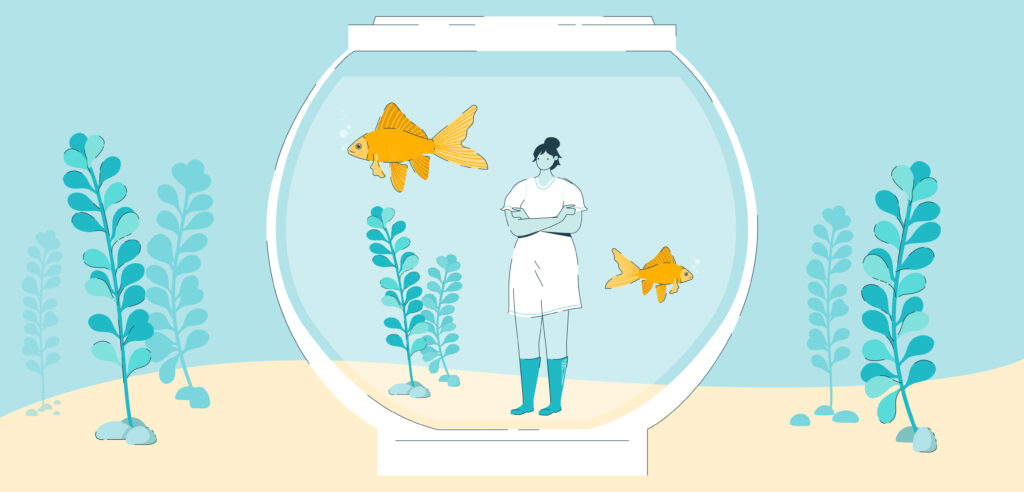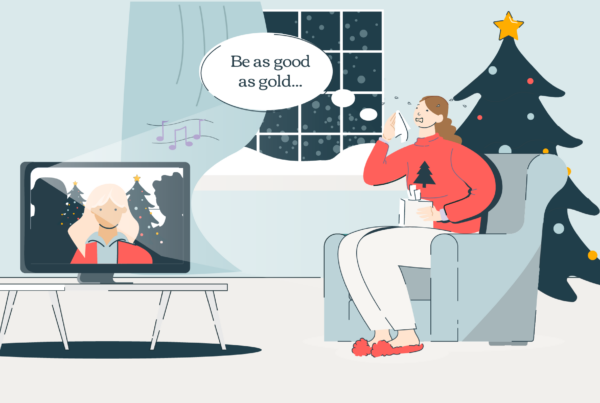How behavioural science can help you grab attention, and make your messages memorable.
Our attention spans have never been shorter
Back in 1971, behavioural economist and computer scientist Herbert Simon said prophetically, “In an information-rich world, the wealth of information means a dearth of something else: a scarcity of whatever it is that information consumes. What information consumes is rather obvious: it consumes attention.”
Simon was right. You know how people laugh at how goldfish have a 9-second memory? According to Microsoft’s 2015 study on attention spans and digital marketing, the average person has now managed to limbo under that record, clocking in an impressively low attention span of just eight seconds. Now of course memory isn’t quite the same as attention span, what is undeniably the case is that there is simply *a lot more stuff out there*. To give you an idea, every second 6,000 tweets, 740,750 WhatsApps and 3,400,000 emails are sent worldwide – all of it vying to slurp our attention away from vital information like this here blog.
The results are in
Researchers at the Technical University of Denmark have found that this overload of content, is indeed lowering our attention span. And that the effect is felt not just when people are engaged with social media but also in other activities like reading books and conducting web searches. You probably ‘duel-screen’ when watching TV for example – just to feel that bit more productive when your show is on; telling yourself you’re maximising your time.
We can lament this shift as much as we like, but behavioural science is about understanding what people actually do, rather than what we want them to do. And as behavioural marketers, we need to understand how to go with the grain of this global attention drought instead of trying to change it.
So what grabs people’s attention in this sea of content? How can you manufacture memorable messaging? Let’s look at three ways to behaviourally optimise your marketing campaigns.
1. Create contrast.
There’s a phenomenon called the Contrast Effect, which is that we remember products and experiences that stand out from their surroundings significantly more than those that blend in.
It’s closely linked to something called the Von Restorff Effect, which is essentially that ‘we remember the odd one out in lists of things’. Nothing ground-breaking there perhaps, but remember that these days ‘lists of things’ are places like our social feeds, email inboxes, and video content.
To stand out here, you have to stick out from the forest of tedium. It takes bravery, but you can stand out through surprising headlines, new angles on old subjects, stories from people that previously haven’t had a voice, and by creating curiosity gaps (the scientific term for clickbait).
Whatever you do though, don’t publish plainness – you’ll become the background the most contrasting content stands out from, meaning you’re actively helping your competitors.
Don’t forget to dare beyond digital too. Cast your mind back to the early 2000s and many commentators were predicting the death of print as online content became king. But reports of print’s demise turned out to be hugely premature. Similarly to the unlikely resurgence of vinyl record-buying in the era of Spotify, today print bobs on the swell of digital content, symbolising quality, craftmanship and – thanks to its relative novelty – making print stand out from the crowd.
2. Inject some literary style.
Statements that rhyme get remembered all the time. OK, John Keats probably didn’t write this in his recently unearthed classic ‘Ode to Joy in B2B Marketing’. But that didn’t stop two scientists from Lafayette College in Pennsylvania appropriating the English romantic poet’s name when they discovered ‘The Keats Heuristic’, a phenomenon in which rhymes are not only more memorable, but perceived as more truthful, too (AKA ‘Rhyme as Reason Effect’).
Their findings suggest a step beyond just rhyming too. That more aesthetically pleasing language tends to be seen as more truthful than ideas that don’t flow quite so satisfyingly. For example, ‘You’re damned if you do, you’re damned if you don’t’ doesn’t rhyme one bit, but it feels more true to us because of its satisfying symmetry.
All of which is to say tone of voice and writing style are far more than a cherry on top of your content. They’re your differentiators, and credibility creators.
So, go easy on it, but consider the power of rhyme to make your marketing sublime. Admittedly, your words may not be remembered 200 years later. But we’re aiming for insights that make your business more mentally ‘available’ when the time is right to buy. And that’s much more doable.
3. Space out.
Finally, if you want people to remember your product or messaging, expose them to it repeatedly in different contexts and formats. We’ll be amazed if we ever get ‘Get Brexit Done’ out of our heads, mores the pity, and it’s because we’re much more likely to remember things when they are repeated over time and in different environments. This is called ‘The Spacing Effect’, and it’s especially important when it comes to training, learning and development. In learning, we need to use all the behavioural tools we can – as we did in this major blended learning project for our client GSK – to make that what you want remembered, gets remembered. You might get tired of writing it, but taking a clear message and repeating it throughout your content is a powerful way to ingrain your brand into your audiences’ consciousness, so you stay top of mind ahead of your competitors.
That’s it for now: thanks for making it this far. And get in touch if you want to discuss how we can help you achieve your communications goals.
You’ll have our undivided attention. Promise.





